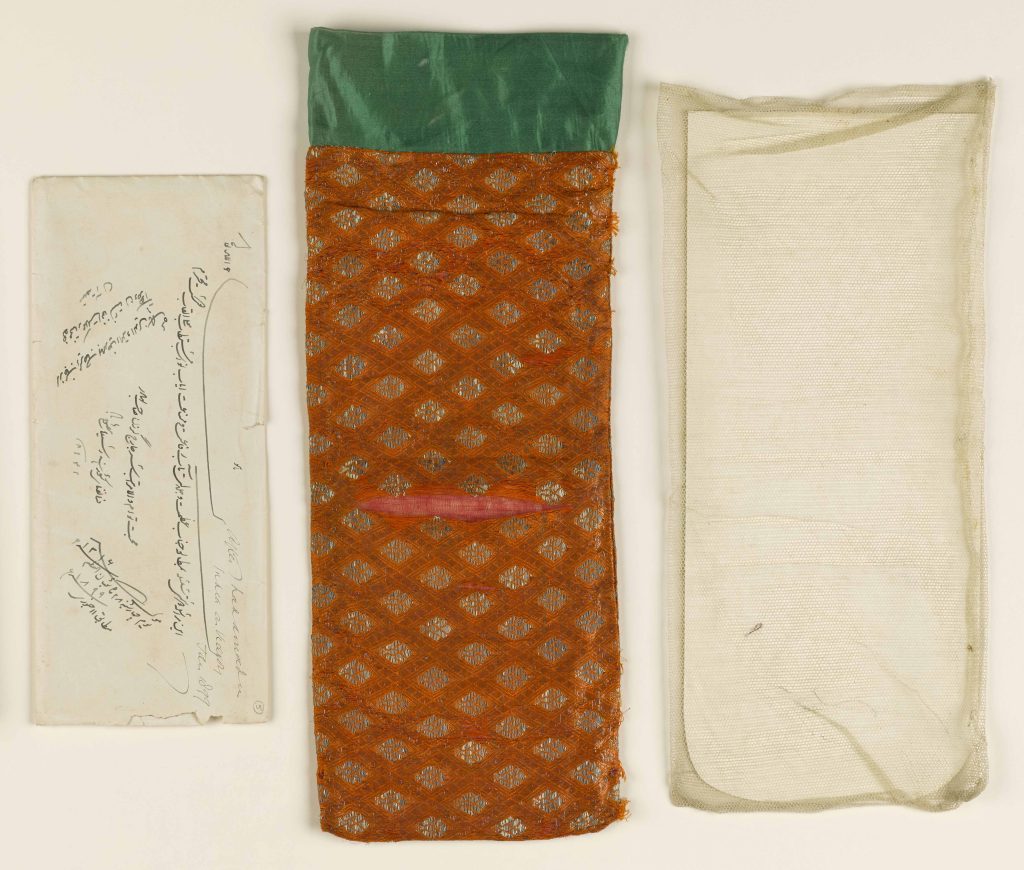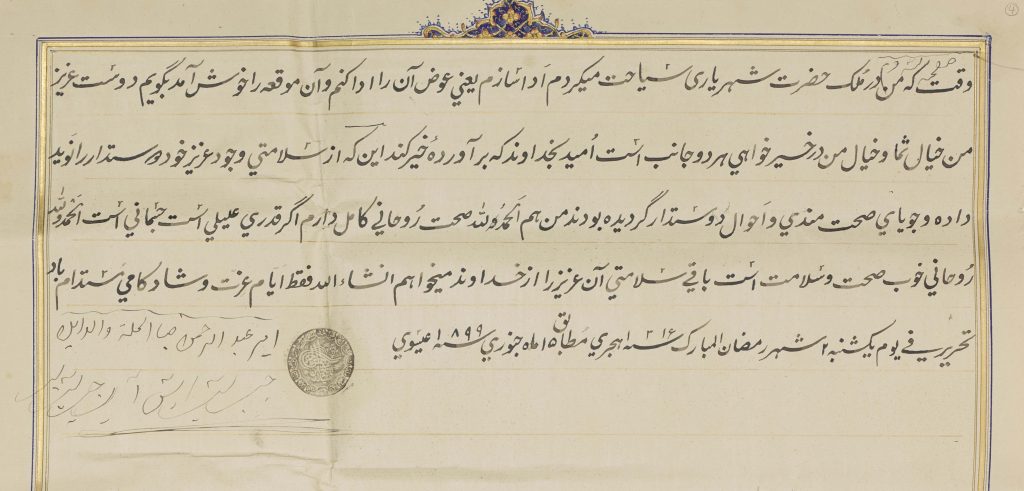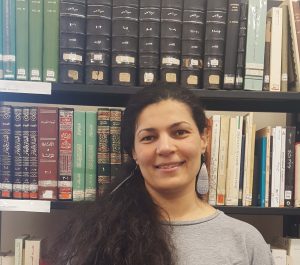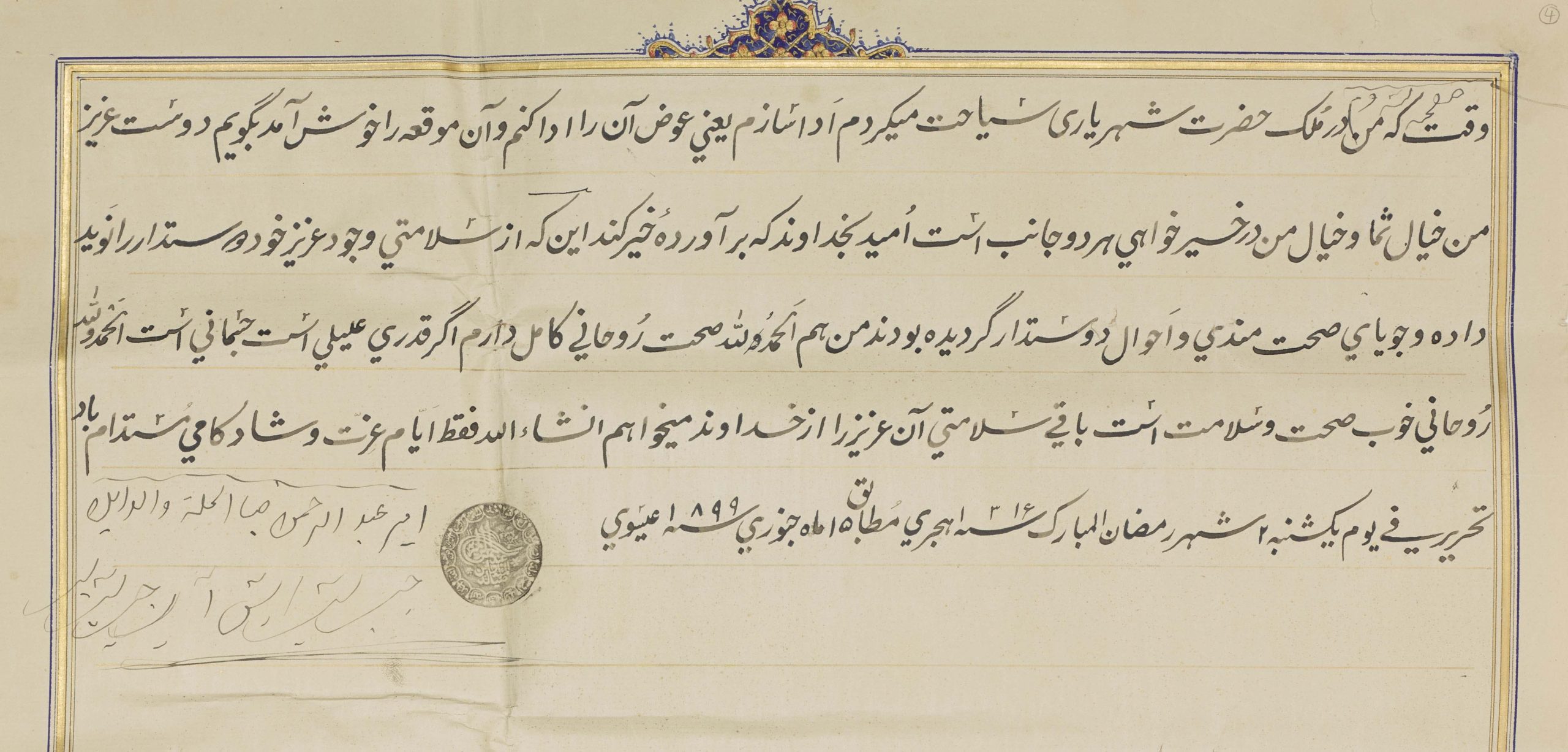
Kharita dispatching
On 2 Ramadan 1316 AH/ 15 January 1899, Amir Abdul Rahman Khan of Afghanistan (r. 1880–1901), sent an official letter, categorised as murāsala, to Lord George Nathaniel Curzon, Viceroy of India (in office, 1898–1911). Eventually, the ceremonially-illuminated letter became part of the George Curzon Papers in the British Library’s India Office and Private Papers collection. As part of my role at the British Library-Qatar Foundation Partnership Programme, I came to catalogue this letter. To my surprise, along with the letter and its paper envelope, there was a silk pouch and a cotton one. Here was where I had to seek help of other British Library (BL) colleagues who worked on similar materials. Cataloguing the item was not easy, it was however one of the most fascinating items I have worked on.

Putting all the notes I received from my colleagues together with my own analysis to the items, allowed me to come to the conclusion to classify the letter and all its elements as a kharita item. Why this name? What is kharita? And what are the stages the kharita went through before being dispatched? These are the main questions I gave answers to in my article in Afghanistan Vol. 2 issue I, April 2019.
Cataloguing the kharita
Indeed cataloguing such items was like unpacking a mystery, and hence, the inspiration for the article. Although it only consists of four folios and two pouches, cataloguing the kharita item took around two months of work. This involved: reading articles which examine similar materials; measuring the dimensions of each element; analysing the stages the pages went through before the letter was penned, tracing the history of the watermark that can be seen through the papers, and so on. It was remarkable to try and imagine the scribes and illuminators at the dar al-inshaʾ of Amir Abdul Rahman’s court, each busy in their own role to prepare the Amir’s letters for dispatching. The letter examined in the article is by itself a unique piece of royal art. The article unfolds the process of creating such a piece. After giving a short summary of the content of the letter, the article explores the main details obtained during the close analysis of the kharita’s physical elements.

Instead of characterising the kharita as an item of political correspondence between two paramount powers, the article shows the amount of labour that went into creating this piece of art. The reader will be able to trace the process of preparing the royal letter, beginning with the purchasing of paper and concluding with the dispatching of the kharita. Among the keywords the article explores are: the East India Company, dar al-inshaʾ; kharita; silk pouch; bobbinet cotton pouch; illumination; and John Dickinson Company.
Read Ula Zeir’s article in Afghanistan.
Video
Biography

Ula Zeir – Content Specialist/ Arabic Language at the British Library (BL). She joined the BL in August 2015 and since then she has been working on the India Office Records (IOR) that are related to the Middle East and the Gulf region from the early 18th to the mid-20th century. In 2011, Ula worked as an independent researcher at the Prime Ministry State Archives (Başbakanlık Devlet Arşivleri), Istanbul, Turkey, and in 2010 she was a Researcher at the Department of Community Relations at the Institute of Ismaili Studies, London. She has also been a guest lecturer at the Ismaili Centre Dubai, the United Arab Emirates since December 2016. Ula is in her final year of a PhD in Islamic and Middle Eastern Studies (IMES) at the University of Edinburgh.





